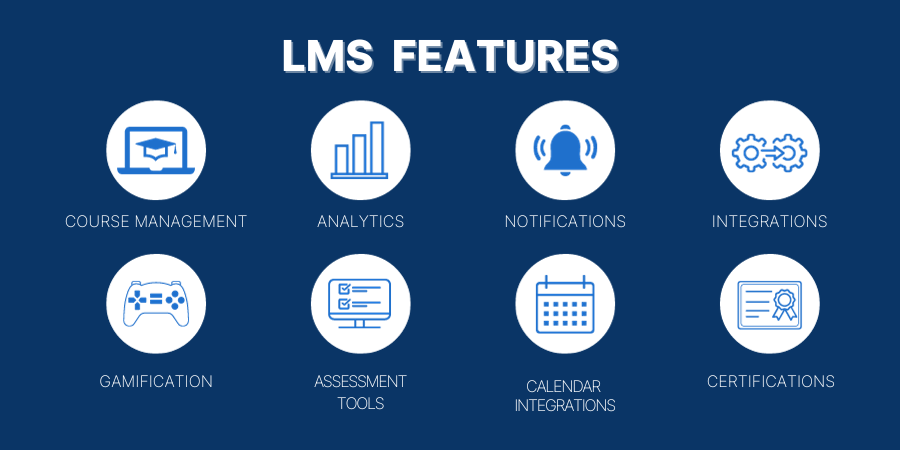What is an LMS? An Introduction to Learning Management Systems
ARTICLE SUMMARY
- An LMS helps companies with employee training and profesional development.
- Some LMS services offer off-the-shelf courses and others allow you to upload or create your own lessons.
- An LMS is only one part of an employee training strategy.
- While an LMS can help in teaching foundational knowledge, it falls short in actionable knowledge and providing hands-on learning.
Training employees is a complicated process. Luckily, there are a plethora of training software options to help you onboard and teach your employees. One of those options is a learning management system (LMS).
Working for ScreenSteps — a knowledge ops solution that helps companies train their employees more efficiently — I’m in the business of transferring knowledge to employees. That includes employee training.
In this blog post, you’ll learn the basic overview of what an LMS is and how you can use it to better train your employees.
Click the topics below to jump to the appropriate section:
What is a learning management system (LMS)?
A learning management system (LMS) is an onboarding, training, and professional development tool. It is a digital hub for education and training in your business.
With an LMS, you can provide and track self-service e-learning courses. It's a platform that helps manage and deliver a wide range of learning materials, from courses and quizzes to videos and more.
Depending on the LMS service, an LMS can host off-the-shelf (pre-packaged) lessons and/or customized courses specific to your company.
Most LMS services are cloud-based. These LMSs live on the internet. Employees can access lessons by logging in from their web browser.
Types of LMS
Not every LMS software is the same. There are different types of LMS software to serve different training needs. The two most common types of LMS are an open-source LMS and a proprietary LMS.
Open-Source LMS
An open-source LMS is a learning management system that provides access to its source code. This allows user to modify and customize the software according to their requirements.
Unlike proprietary LMSs, which come pre-packaged with features and limitations, open-source LMSs provide an open platform for adaptation. This provides more flexibility and makes it easier to customize your LMS.
With an open-source LMS, you can design your unique look and add special features. Most importantly, you can create and upload your own training videos and courses.
Proprietary LMS
A proprietary LMS is an out-of-the-box solution. These are ready-made lessons and courses that come pre-packaged and ready for you to take.
You buy the lessons or subscribe to the service, and you're ready to start using them.
Typically, proprietary LMS courses are generic lessons that apply to most businesses, like cyber security, marketing best practices, etc.
Key features of an LMS

Learning Management Systems (LMSs) offer a wide range of features to facilitate online learning and training.
Here are some of the most defining features commonly found in LMS platforms:
- Course management
- Library of pre-packaged courses
- Assessment tools
- Gamification
- Performance tracking and reports
- Notifications
- Calendar integrations
- Certifications
- Social learning tools
- Organizational management
- Integrations for HR systems and CRM
5 benefits of an LMS
Using an LMS as part of your employee training plan offers many benefits. Here are five of the advantages of an LMS:
1. It makes training more flexible and accessible
Because LMS courses are cloud-based and pre-recorded, employees can take these courses at their own pace.
Employees don’t need to be in a classroom to access these lessons. They can access them anywhere with internet access, which means they can take these lessons remotely.
2. It increases consistency in training
An LMS provides standardized training. You don’t need to worry about a trainer going off-script or forgetting to teach a portion of the lesson. The lesson is the same every time, no matter who is taking the course or when they are taking it.
3. It helps you track employee learning
With tracking and analytics tools, an LMS helps administrators track employee progress and performance. You know who is taking courses, where they are in the lesson, and when they’ve completed and passed the course.
This helps supervisors and managers identify areas where employees are weak and need more training.
4. It is cost-efficient
Traditional in-person training can be expensive. Travel costs, accommodations, materials, and the trainer’s time all add up.
An LMS creates a repeatable training program that doesn’t require those extra expenses.
5. It makes it easier to scale
An LMS can accommodate the growth of an organization. As the number of employees increases, the system can handle more users and courses.
5 challenges with an LMS
While Learning Management Systems (LMSs) offer numerous advantages, they also come with their fair share of challenges and weaknesses. Here are five common challenges and weaknesses associated with LMS implementation:
1. It only teaches foundational knowledge — not actionable knowledge
With an LMS, you miss out on hands-on experience. Your LMS primarily focuses on foundational knowledge, which is background and contextual information. This is information that you expect your employees to memorize.
While you do need to teach foundational knowledge, you also have to teach actionable knowledge if your employees are going to leave training capable of handling their jobs independently.
HOT TIP: Ideally, practice scenarios would take up the majority of your training. (We recommend spending 80-90% of your training time on practice activities.) Learn more about actionable vs. foundational knowledge here.
2. It is difficult to maintain
Creating high-quality e-learning content can be time-consuming and costly. Maintaining content to keep it current and relevant can also be a significant challenge. As policies and procedures change in your business, you have to update your LMS lessons.
Outdated or poorly designed content can lead to a decrease in the effectiveness of training programs.
3. It doesn’t measure true engagement
When learners are on their own to learn, it is difficult to measure engagement. While an LMS uses quizzes to check on how well your learners are remembering their lessons, it doesn’t give you a clear understanding of how involved they are with your lessons.
Without face-to-face interaction with instructors and peers, it can make it harder to keep learners engaged and motivated. Some employees may struggle with self-motivation and discipline.
4. It can be expensive to implement an LMS
The initial setup and implementation of an LMS can be costly. Besides the subscription costs, you have the additional cost of software licensing, customization, and training costs.
Ongoing maintenance, updates, and support expenses can also add to the total cost of ownership.
5. It is a learning curve to use an LMS
Learning to use an LMS can be complex, especially for users who are not tech-savvy. Learning how to navigate and use the platform effectively may require training and time.
There is also a learning curve for supervisors and managers overseeing the LMS. They need to learn how to create and assign the courses.
Note: These challenges don’t necessarily mean that you shouldn’t use an LMS. These are just challenges to be aware of before using one so that you can be prepared with strategies to address them effectively.
Who uses an LMS (common use cases)
Learning management systems (LMSs) are used across a wide range of industries to facilitate employee training, education, and skill development. Here is a list of industries that commonly use LMSs:
- Education
- Corporate business
- Healthcare
- Manufacturing
- Government and public sector
- Nonprofit organizations
- Automotives
Basically, any business that needs to train employees to do their jobs can use an LMS as part of their training strategy.
How to choose the right LMS
As you research LMS services, you want to perform the most efficient search. To do that, make sure you have to consider the following questions.
- Goal and problems you are solving: Why do you want an LMS? What pain points do you have? How are you hoping an LMS solves this problem?
- Consider your budget: How much can you spend on LMS software?
- Number of users and administrators: How many people will be taking courses? How many administrators will upload and create courses?
- Security requirements: What safety standards does your IT department require?
- Off-the-shelf or custom courses: What type of courses do you want?
- Top features: What features can you not live without?
If you have the answers going into the search, it will be easier to eliminate an LMS upfront that isn’t a good fit.
How much does an LMS cost?
As with all software, there is a wide range of prices that businesses charge for their LMS services.
For a cloud-based LMS, a rough range is $210 per month to more than $800 per month for 100 users.
Most LMS services charge in one or more of these ways:
- Pay per course
- Pay per learner per use
- Pay per user/learner (some have a minimum number of users required)
Outside of your subscription price, be aware that your LMS service may have these additional charges:
- License fee (one time)
- Implementation and set up
- Hosting fees
- Integration costs
- Content creation
- Support and maintenance charges
Best LMS software
There are dozens if not hundreds of LMS services available. It is difficult to review all of them in order to find the right fit for your business. Here are a few of the most popular LMS platforms on the internet:
Why an LMS won’t solve your employee onboarding problems
An LMS is a powerful tool for training your employees. Unfortunately, an LMS is not a “one software fixes all” solution. While an LMS can help teach employees foundational knowledge, it doesn’t cover actionable knowledge.
If you are looking to solve your training problems, you need the right software PLUS the right framework. You need to change behaviors to help employees become more efficient learners and more productive employees.
If an LMS won’t solve your training problems, what do you need?
You need a knowledge ops solution.
ScreenSteps is a knowledge ops solution. With ScreenSteps, you get a knowledge ops platform, which is a knowledge base that also has courses, and the Find & Follow Framework.
Of course, an LMS still might be a good investment for your company.
Before investing in an LMS, read this article on why an LMS won’t solve your problem. Then you will know whether you fit in the category of “you do” or “you don’t” need an LMS to improve your employee training. Good luck in your search!



